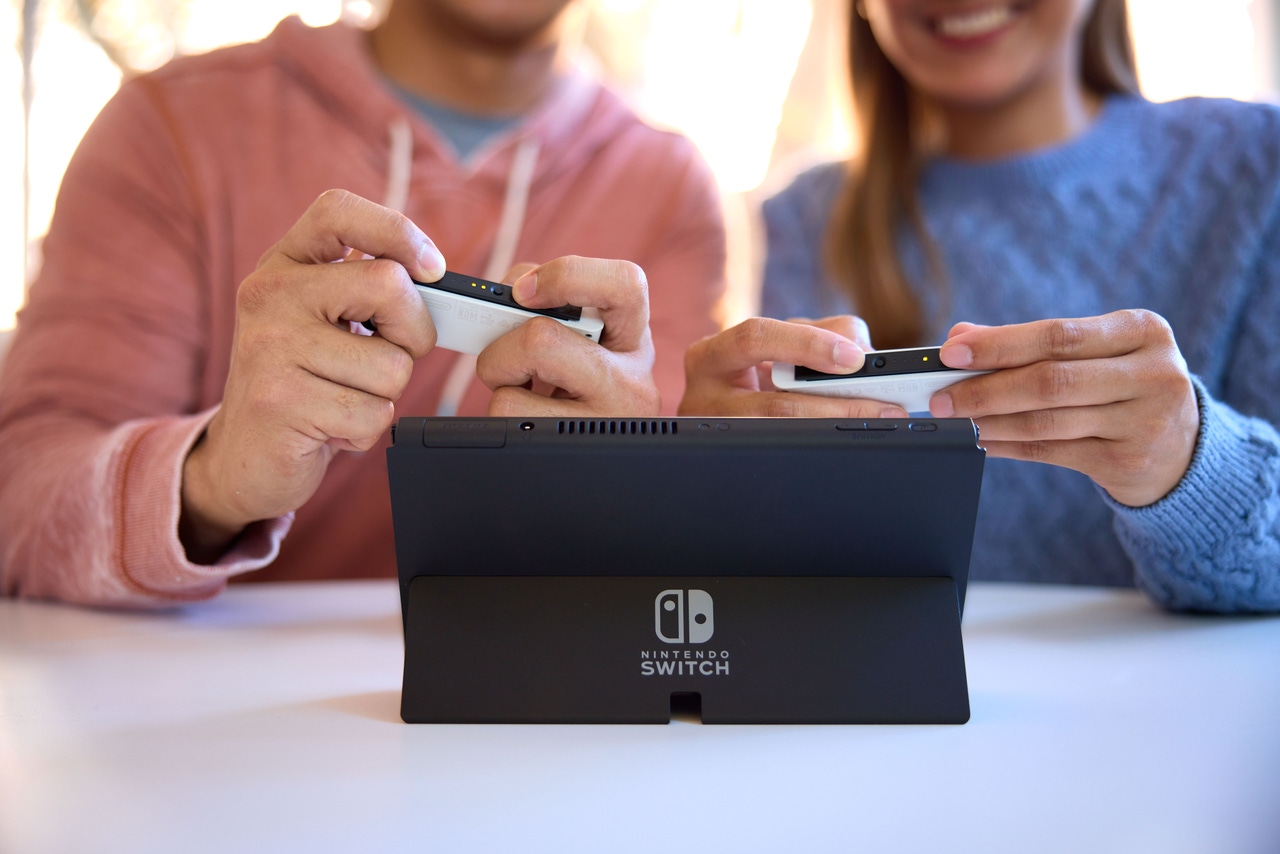Trending
Opinion: How will Project 2025 impact game developers?
The Heritage Foundation's manifesto for the possible next administration could do great harm to many, including large portions of the game development community.

Featured Blog | This community-written post highlights the best of what the game industry has to offer. Read more like it on the Game Developer Blogs or learn how to Submit Your Own Blog Post
Nintendo's acquisition of Shiver Entertainment could make for a potent weapon to help it navigate its next-gen transition.

In May 2024, Nintendo announced its acquisition of Shiver Entertainment from previous owner Embracer Group. In the last half-decade, Shiver has focused on bringing high-profile triple-A games to Nintendo Switch, including Mortal Kombat 11 and Hogwarts Legacy.
Under Embracer’s ownership, Shiver also worked alongside Saber Interactive, a company with a renowned reputation for producing impressive Switch ports of games such as The Witcher 3, Crysis, and Kingdom Come: Deliverance – games once considered not feasible for the platform.
Nintendo notes that Shiver’s current focus will continue – that is, it will be involved in commissioning and producing ports of games to platforms including Nintendo Switch.
Omdia expects the next-generation “Switch 2” to continue aligning with the console software landscape. Unlike Steam Deck, which utilizes a translation layer (Proton) to enable compatibility with existing PC titles, Switch 2, like PS5, will require its own versions of games.
Switch 2 is expected to provide a sizeable leap in hardware performance as the original Switch approaches its eighth birthday. This should help Nintendo fill the gap when it comes to attracting third party support of titles that would have been too ambitious for the original Switch.
Nintendo has also hired Gio Corsi for its triple-A third party management team. Corsi previously led PlayStation’s third-party production and developer relation efforts, suggesting Nintendo is eager to attract third-party support of triple-A titles.
Nintendo can no longer rely on a library of unnoticed Wii U software to bulk out its first-party release schedule. With production timescales also increasing gen-on-gen, Nintendo will be more reliant on third-party content to fill the gap.
Shiver will help Nintendo bolster its third-party portfolio. Its alignment under Nintendo should give it access to the company’s hardware and software engineering teams, improving its capability to deliver quality conversions. It also secures their exclusive attention on working with Nintendo platforms, which may become less guaranteed as more players offer triple-A gaming on the go, including Apple.
Nintendo can also use its ownership of Shiver Entertainment as a bargaining chip when negotiating with publishers to bring their games to “Switch 2”, particularly where resources are scarce. Existing exclusivity agreements may typically involve support for funding, localization, marketing, and distribution – Nintendo could now promise assistance from a first-party specialist developer on top.
Nintendo will have to navigate an extended cross-gen period
Omdia’s Games Addressable Market Metrics Database estimates that 104 million Nintendo Switch consoles will remain in active use by the end of 2024. With Switch’s successor estimated to land in 2025, a huge audience will need shepherding over to the next generation.
This is a challenge that competitor Sony continues to face even as PlayStation 5 enters the latter half of its cycle. 1H24 Console Report reveals that 50m last-gen PS4 consoles remain in active use (see Figure) as the PS5 active installed base outweighs the equivalent PS4 decline by a factor of 1.16.
Figure: Despite high replacement rate, active installed base for PlayStation 4 remains above PlayStation 3 gen-on-gen

Nintendo must prepare for a similarly prolonged cross-generation period – it needs to juggle onboarding players to Switch 2 with sustaining the software spend and engagement of the portion of its audience that has yet to make the transition.
That is where the acquisition of Shiver Entertainment could come in handy. With its audience split between new and old generations of hardware in the first half of its new console cycle, Nintendo may wish to release Switch versions of select titles originally planned for “Switch 2”. Shiver could be involved in bringing next-generation first-party content to its soon-to-be last-gen Switch.
Nintendo is about to enter a new generation where digital libraries provide software continuity, making exclusive next-gen content more important than ever. But it also cannot afford to ignore the portion of its audience that will be slower to upgrade. Nintendo’s acquisition of Shiver Entertainment could make for a potent weapon to help it navigate its next-gen transition.
You May Also Like